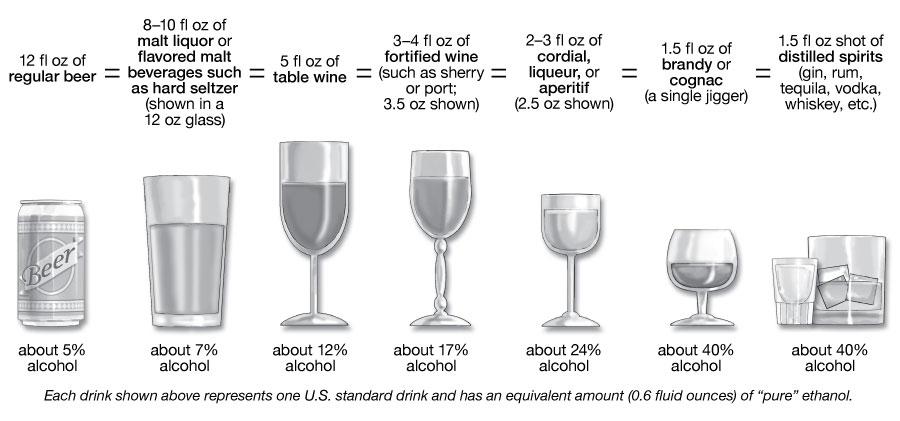Do you think I’m an alcoholic?
Anonymous
In 53 years of living I have yet to see the person whose 'one' daily glass of wine is a four ounce pour.

|
Anonymous
That sums it up nicely! |
Anonymous
Did you graduate high school? This is not how that works. If you do not understand science at even a basic level, you should probably not comment. |
Anonymous
Mine are. I just had one last night. Although, one daily serving for wine is actually 5 oz. |
Anonymous
When my husband watches football he and I are not “mentally in the same space,” but I would not ask him to give up football. You sound horrid. Maybe he drinks because of you. |
Anonymous
Can you provide the citation for this, please? I’m not finding it. |
Anonymous

Note that a full 12 oz. bottle of hard cider would actually be 1.25-1.5 units of alcohol, not one unit. |
Anonymous
https://www.who.int/europe/news/item/20-10-2021-alcohol-is-one-of-the-biggest-risk-factors-for-breast-cancer#:~:text=The%20risk%20of%20breast%20cancer%20increases%20with%20each%20unit%20of,100%20ml%20each)%20every%20day. |
Anonymous
https://www.komen.org/breast-cancer/risk-factor/alcohol-consumption/ |
Anonymous
See links I've provided above (DP). Within the links are other links to the research studies. There is no question that poster's assertion is in line with the science. Sorry! Time to reconsider those daily pours of wine. |
Anonymous
In the United States, one "standard" drink (or one alcoholic drink equivalent) contains roughly 14 grams of pure alcohol, which is found in: 12 ounces of regular beer, which is usually about 5% alcohol. 5 ounces of wine, which is typically about 12% alcohol. 1.5 ounces of distilled spirits, which is about 40% alcohol. https://www.niaaa.nih.gov/alcohols-effects-health/overview-alcohol-consumption/what-standard-drink#:~:text=In%20the%20United%20States%2C%20one,which%20is%20about%2040%25%20alcohol |
Anonymous
One glass doesn’t mean one serving of wine. That she didn’t make it specific or hasn’t chimed in yet to clarify likely means her “glass” is at least a couple of times more than the serving. |
Anonymous
You’re not sorry at all, you enjoy being a sanctimonious tw7t. |
Anonymous
The overall risk of breast cancer is 13%. 20% extra risk would bring that up to 15.6% overall risk. That's assuming the drunks weren't already being factored into the 13% statistic. |
Anonymous
Science is not sanctimonious, poster. Being anti-science is more than a little bit sad, especially when it comes to railing against science that points to you drinking your way into an early grave. You are entirely within your rights to make whatever life choices you want to make, but to be angry and bitter and feel the need to call out the science and the messenger who is merely seeking to educate? I guarantee you that there are at least a dozen posters who read this thread or contributed to it and who didn't have the actual current science on the detrimental effects of even low and moderate alcohol consumption - that science is new within the last few years, after years of messaging low to moderate use is healthy. I'm sure just as many had their eyes opened regarding alcohol units as measured by health officials in all that research with statistics on frequency of consumption and cancer risk, versus alcohol units as perceived by the average casual drinker. Most low to moderate alcohol drinkers are actually drinking 2-3 times more alcohol units than they realize in terms of how it impacts health. And of course the newest science based advice, which is to avoid alcohol entirely and cultivate healthier habits for stress or mood management. |
